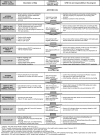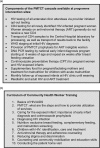The Tingathe programme: a pilot intervention using community health workers to create a continuum of care in the prevention of mother to child transmission of HIV (PMTCT) cascade of services in Malawi
- PMID: 22789644
- PMCID: PMC3499848
- DOI: 10.7448/IAS.15.4.17389
The Tingathe programme: a pilot intervention using community health workers to create a continuum of care in the prevention of mother to child transmission of HIV (PMTCT) cascade of services in Malawi
Abstract
Introduction: Loss to follow-up is a major challenge in the prevention of mother to child transmission of HIV (PMTCT) programme in Malawi with reported loss to follow-up of greater than 70%. Tingathe-PMTCT is a pilot intervention that utilizes dedicated community health workers (CHWs) to create a complete continuum of care within the PMTCT cascade, improving service utilization and retention of mothers and infants. We describe the impact of the intervention on longitudinal care starting with diagnosis of the mother at antenatal care (ANC) through final diagnosis of the infant.
Methods: PMTCT service utilization, programme retention and outcomes were evaluated for pregnant women living with HIV and their exposed infants enrolled in the Tingathe-PMTCT programme between March 2009 and March 2011. Multivariate logistic regression was done to evaluate maternal factors associated with failure to complete the cascade.
Results: Over 24 months, 1688 pregnant women living with HIV were enrolled. Median maternal age was 27 years (IQR, 23.8 to 30.8); 333 (19.7%) were already on ART. Among the remaining women, 1328/1355 (98%) received a CD4 test, with 1243/1328 (93.6%) receiving results. Of the 499 eligible for ART, 363 (72.8%) were successfully initiated. Prior to, delivery there were 93 (5.7%) maternal/foetal deaths, 137 (8.1%) women transferred/moved, 51 (3.0%) were lost and 58 (3.4%) refused ongoing PMTCT services. Of the 1318 live births to date, 1264 (95.9%) of the mothers and 1285 (97.5%) of the infants received ARV prophylaxis; 1064 (80.7%) infants were tested for HIV by PCR and started on cotrimoxazole. Median age at PCR was 1.7 months (IQR, 1.5 to 2.5). Overall transmission at first PCR was 43/1047 (4.1%). Of the 43 infants with positive PCR results, 36 (83.7%) were enrolled in ART clinic and 33 (76.7%) were initiated on ART.
Conclusions: Case management and support by dedicated CHWs can create a continuum of longitudinal care in the PMTCT cascade and result in improved outcomes.
Figures



References
-
- UNAIDS. Countdown to zero: global plan towards the elimination of new HIV infections among children by 2015 and keeping their mothers alive, 2011–2015; Geneva: UNAIDS; 2011. - PubMed
-
- Mofenson LM. Successes and challenges in the perinatal HIV-1 epidemic in the United States as illustrated by the HIV-1 serosurvey of childbearing women. Arch Pediatr Adolesc Med. 2004;158(4):422–5. - PubMed
-
- European Collaborative Study. Mother-to-child transmission of HIV in the era of highly active antiretroviral therapy. Clin Infect Dis. 2005;40(3):458–65. - PubMed
-
- WHO. Antiretroviral drugs for treating pregnant women and preventing HIV infection in infants: recommendations for a public health approach. Geneva: WHO; 2010. - PubMed
-
- Ahoua L, Ayikoru H, Gnauck K, Odaru G, Odar E, Ondoa-Onama C, et al. Evaluation of a 5-year programme to prevent mother-to-child transmission of HIV infection in Northern Uganda. J Trop Pediatr. 2010;56(1):43–52. - PubMed
Publication types
MeSH terms
Substances
Grants and funding
LinkOut - more resources
Full Text Sources
Medical
Research Materials

